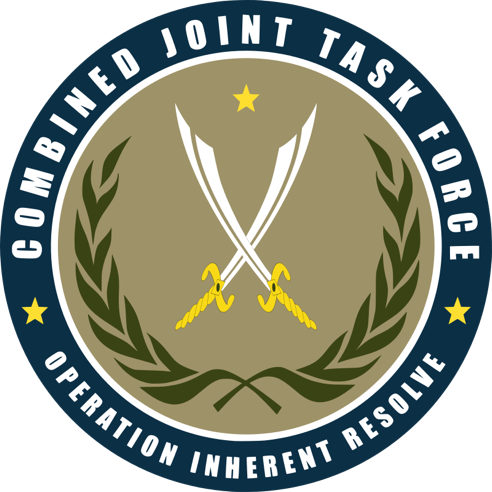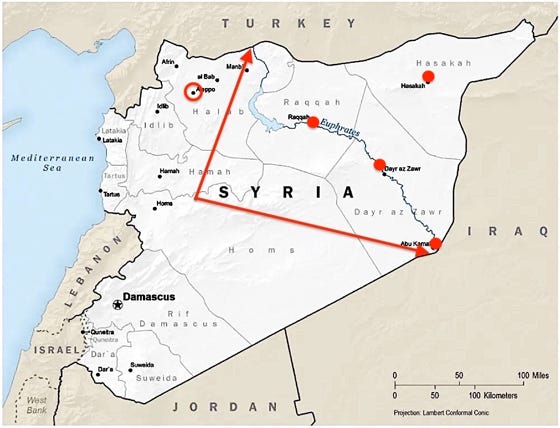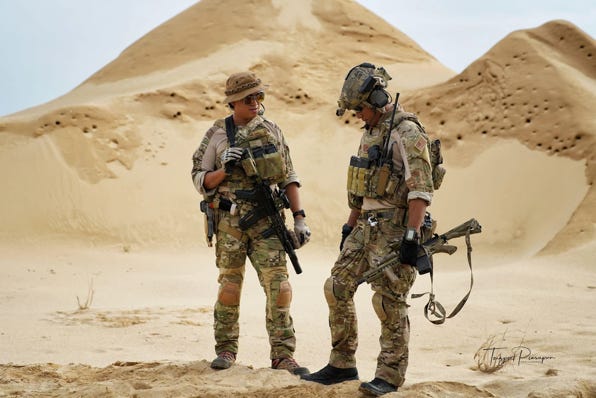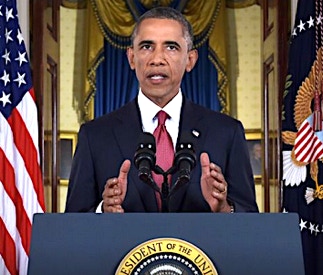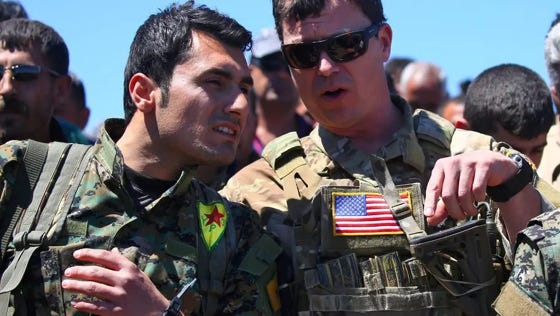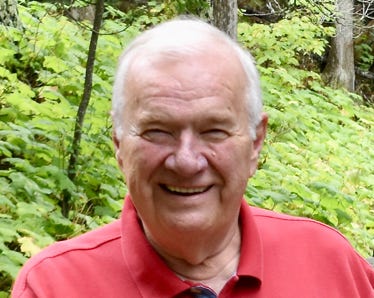DUTY, HONOR, COURAGE, RESILIANCE
Talking Proud: Service & Sacrifice
Syria: A fractured state
Venture into the unfamiliar
President Obama’s Commitments
The 9/11 attacks of 2001 jolted the US. It then fought a war in Afghanistan from 2001 to 2020 and another war in Iraq from 2003 to 2011, both targeted at what the US considered terrorists.
Shortly after 9/11, President G.W. Bush signed Executive Order 13224 in 2001, saying the US has a “national commitment to lead the international effort to bring a halt to the evil of terrorist activity.” This began America’s Global War on Terror.
Eleven years later, President Barack Obama in 2012 approved a covert CIA program known as “Timber Sycamore” designed to train Syrian rebels to overthrow the Assad government. The US supplied money, weapons, and training. Saudi Arabia and Jordan supported the program. Obama approved this program for multiple reasons: Syria was mired in a civil war, the Islamic State was evolving, Assad was using chemical weapons, and Syria appeared ready to explode.
In September 2015, a Pentagon spokesman revealed that Syrian rebels trained by the US gave some of their equipment to the al-Nusrah Front (ANF), affiliated with al-Qaeda and a designated terrorist organization. ANF was fighting against Assad. CENTCOM acknowledged this was happening.
A notable allegation emerged in November 2024 that USAID awarded $122 million to an NGO between 2015 and 2018 that provided nine million dollars of food kits to ANF. A sealed indictment has been opened, and the case will be adjudicated.
But let’s step back to 2014. President Obama spoke to the nation in September 2014 about the rising tide of Islamic terrorism. He said that despite everything that had been done since 9/11, “we continue to face the terrorist threat.” He then told his American audience what he intended to do about this situation,
“Our objective is clear: We will degrade, and ultimately destroy, ISIL through a comprehensive and sustained counterterrorism strategy.”
Obama announced the formation of a broad international coalition to “roll back the terrorist threat.” This is now known as the Global Coalition against Daesh. The Coalition has 87 members. Obama defined this endeavor in straightforward military terms,
- “First, we will conduct a systematic campaign of airstrikes against these terrorists.
- “Second, we will increase our support to forces fighting these terrorists on the ground.
- “Third, we will continue to draw on our substantial counterterrorism capabilities to prevent ISIL attacks.
- “Fourth, we will continue to provide humanitarian assistance to innocent civilians who have been displaced by this terrorist organization.”
One feature of Obama’s 2014 speech that caught my eye was his statement that the US had “ramped up its military assistance to the Syrian opposition” and called on Congress to provide “additional authorities and resources to train and equip these (Syrian opposition) fighters.” I now know this was an extension of the Timber Sycamore Program, and the new endeavor was nicknamed “train and equip.”
He said the US “must strengthen the (Syrian) opposition as the best counterweight to extremists like ISIL while pursuing the political solution necessary to solve Syria’s crisis once and for all.”
The political rhetoric here is daunting. Obama effectively made the Assad government an enemy of the US, an opposing force at the least. President Obama placed the US in opposition to the IS terrorists and the Syrian government of Bashar Assad.
Following Obama’s lead, the US Department of Defense (DoD) created the Combined Joint Task Force (CJTF) Operation Inherent Resolve (OIR) as the military arm of the Global Coalition. The CJTF-OIR is headquartered at Camp Arifjan, Kuwait.
The CJTF-OIR placed its most significant emphasis on IS forces in Iraq, primarily because the US had fought a war there. However, the CJTF also had to pay considerable attention to the growing presence of IS forces in Syria. The CJTF touts that it represents the 87 members of the Global Coalition against Daesh, but the US and Kurdish-led Syrian Democratic Forces (SDF) provide the overwhelming percentage of military forces actively involved.
The CJTF began surveillance flights over Syria in August 2014. These flights violated Syrian airspace, but the message was clear: the gloves are off.
CENTCOM announced in September 2014 that the US, along with Bahrain, Jordan, and Saudi Arabia, employed a mix of fighter, bomber, and remotely piloted aircraft and cruise missiles targeting IS forces and multiple facilities up and down the Euphrates River Valley in eastern Syria. The US alone also struck Khorasan Group targets west of Aleppo. The Khorasan Group consisted of al-Qaeda veterans sent from Afghanistan and Pakistan to Syria. Its presence underscores my earlier comments that everybody and their mother were in the action in Syria. It’s mind-boggling to keep track of them all.
On October 30, 2015, President Obama authorized “less than 50” US ground troops in Syria. They would “train and equip” Syrians to fight IS. White House Press Secretary Josh Earnest emphasized they would not have a combat mission. Earnest’s words,
“The President does expect that they can have an impact in intensifying our strategy for building the capacity of local forces inside of Syria for taking the fight on the ground to ISIL in their own country. That has been the core element of the military component of our strategy from the beginning: building the capacity of local forces on the ground.”
I understand the US ran two programs: Timber Sycamore (covert) and Train and Equip (overt). The CIA ran the covert program, and CENTCOM ran the overt program, which is said to have cost the US $500 million.
Overall, neither program went well. The US, Turkey, and Jordan joined to train Syrian rebels to fight against IS in Syria in the covert program. This group was known as Division 30 or D-30 and was headquartered in Azaz, north of Aleppo. The program was a flop. Very few people were trained, and those who were were attacked and defeated by Al-Nusrah.
The Department of Defense terminated the “Train and Equip” overt program in October 2015. Few were trained, and those trained did not measure up in the fight.
Tara McKelvey reported for BBC about the US “train-and-equip” program for Syrian rebels. McKelvey said,
“The goal (in 2014) was to train about 15,000 rebels in Jordan and other countries so they could return to Syria and fight. However, US defence officials admitted last month (September 2015) that only four or five of the recruits in the programme had actually returned to the battle.”
The US needed a ground force to fulfill Obama’s pledges. To train a Syrian partner force, the US had to start virtually from scratch. The US was able to develop a partner force in Iraq but not in Syria. Vetting Syrians turned out to be a significant obstacle.
The US decided to ally with the Kurdish People’s Protection Units (YPG), which fought well in Kobani. It was a makeshift Syrian Kurd-Arab coalition. Christopher E. Howard said this coalition “provided the backbone of the Syrian Democratic Forces (SDF). By the year’s end, 50 USSOF (US Special Operations Forces) advisors had supported the SDF in Syria. By year’s end, 50 USSOF advisors supported the SDF in Syria.”
Click to zoom graphic-photo
